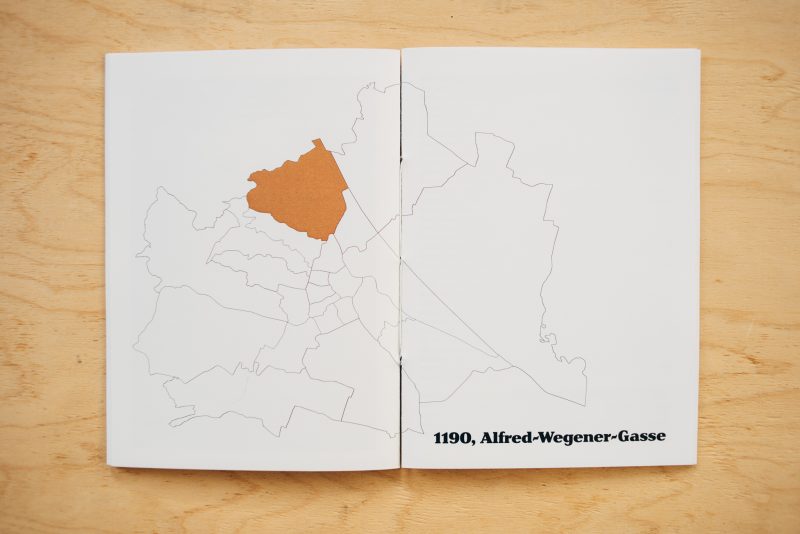Alfred-Wegener-Gasse
1190 Döbling
€ 16,00
Pages: 28 cover
Edition: 5 + artists copy (first edition)
Date: 2020
Film: Lomography Metropolis
Camera: Nikon F100
4 in stock
Buy a print
Alfred-Wegener-Gasse (Grinzing), named in 1933 after the German meteorologist, polar researcher and geoscientist Alfred Wegener (November 1, 1880, Berlin – Nov 1930, Greenland).
Wegener attended the former Kölln high school on Wallstrasse, which he graduated as the best in his class. He then studied physics, meteorology and astronomy in Berlin, Heidelberg and Innsbruck from 1899 to 1904. From 1902 to 1903, Wegener was an assistant at the Urania public observatory in Berlin during his studies. He wrote his doctoral thesis at Berlin University in 1905 in astronomy, but then turned more to meteorology and physics. In his opinion, there was not much left to research in astronomy, and he was bothered by the fact that an astronomer is strongly tied to his place of observation.
In 1906 Alfred Wegener took part in the first of a total of four Greenland expeditions. Wegener built the first meteorological station in Greenland (Danmarkshavn).
After his return in 1908, Alfred Wegener was a private lecturer in meteorology, practical astronomy and cosmic physics in Marburg until the outbreak of the First World War. When he happened to become aware of the paleontological connections between South America and Africa in the autumn of 1911, the idea of a supercontinent that had broken up and whose parts then drifted apart germinated. On January 6, 1912, he presented his first thoughts on continental drift to the public.
In 1922 the third, completely revised edition of “The Creation of the Continents and Oceans” was published . During this time, the increased discussion about his displacement theory began, initially only in German-speaking countries, then also internationally. The criticism in the professional world was mostly devastating. It is noteworthy, however, that Otto Hahn fully confirmed Wegener’s theory in his monograph “What does radioactivity teach us about the history of the earth?”, Which was published in 1926. Only since the 1970s has the plate tectonics resulting from Wegener’s investigations been generally recognized in scientific circles. As part of his professorship for meteorology and geophysics in Graz, from 1924, he took on Austrian citizenship.
During his fourth expedition to Greenland, Wegener was probably killed around November 16, 1930. On May 12, 1931, Wegener’s carefully laid grave was found in the ice. Heart failure due to overexertion was believed to be the cause of death. His Greenlandic companion Rasmus Villumsen, who had buried him, remained missing, and with him Wegener’s diary.





























